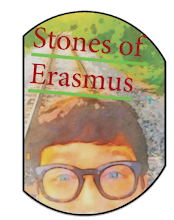 |
| A photograph of me with my pet dog Maggie |
I post pictures of my brothers and I playing near Galatas Cemetery Road in Madisonville, Lousiana (circa 1998).
Family Photographs: Brothers in Madisonville, Louisiana
My brothers and I play near Galatas Cemetery Road in Madisonville, Lousiana (circa 1998). That’s our dog, Maggie, in the left foreground — she was a Springer Spaniel mix that went everywhere we went. I miss her still.
I Took These Pictures Using Black and White Film
In these photographs, I am either a Junior or a Senior in high school. I had a camera that I usually carried around with me, and I thought of myself as sophisticated that I used black and white film. It is funny how the way we take photographs has changed so considerably since the advent of digital cameras. I take most of my shots on an iPhone today. However, I still have my Canon SureShot. It is packed away and in storage — but I still own it.
Bygone Days — Look at Us Now!
Looking at these family photographs, it makes me think of how much time my brothers and I spent together, even though we were vastly different. Brad, my older brother, still looks playful and youthful, although he is probably college-aged in this photograph. Brad has had several odd jobs over the years; he still lives in Madisonville — in a house he bought for himself (not too far from where these photographs were taken). Nicholas, the baby, would later grow up to become a soldier in the United States Army and serve two tours in Iraq. He is now a veteran, is married to a woman named Brooke, and has two kids! I turned out to be gay. Was a monk for a spell. Now I am a school teacher, and I live in work in New York City. I go home to visit about once a year.



